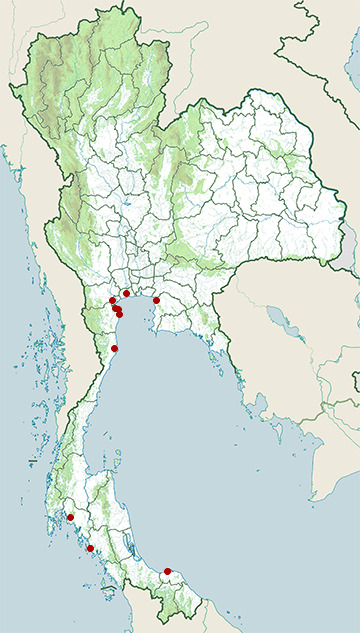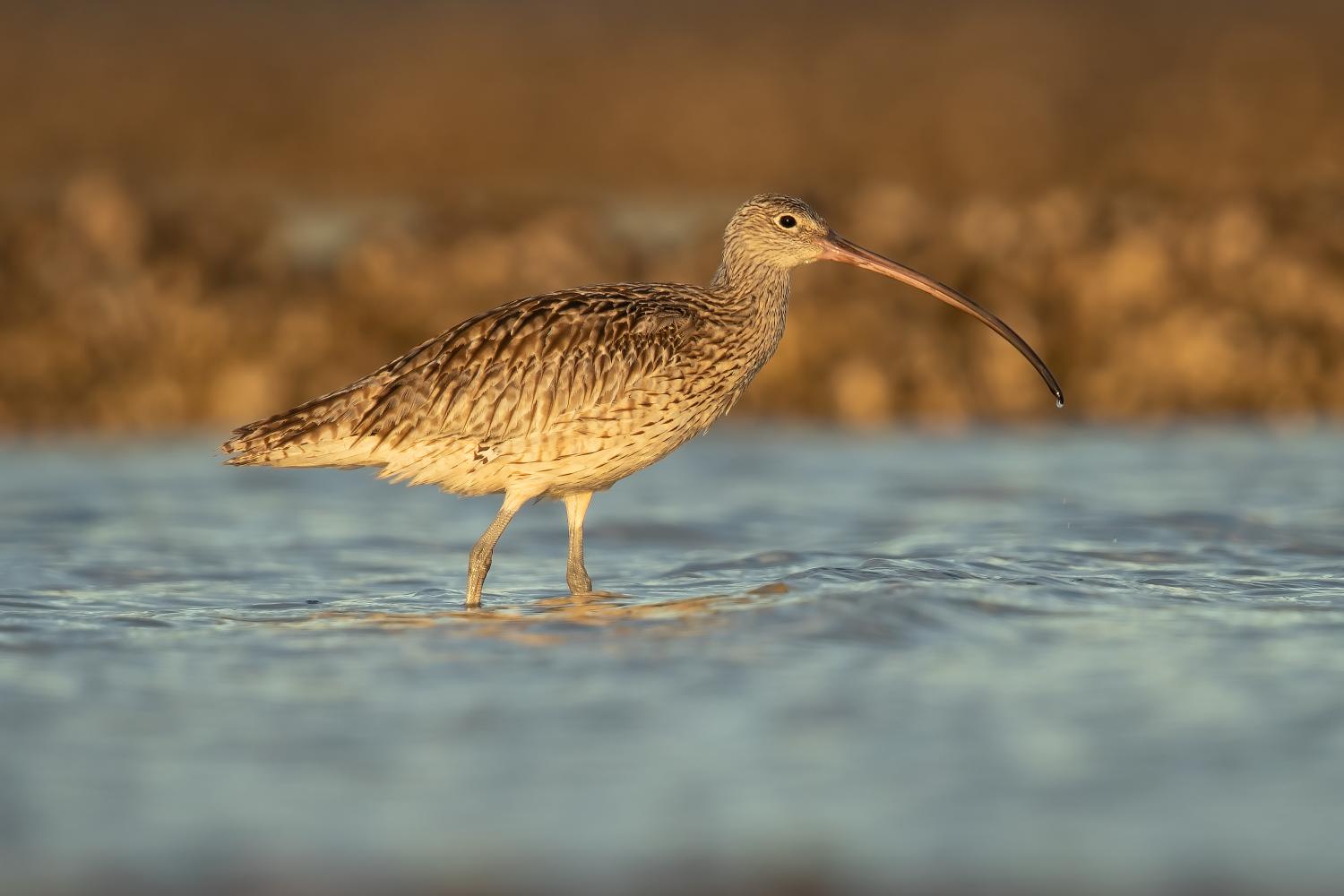Species of Thailand
Far eastern curlew
Numenius madagascariensis
Carolus Linnaeus, 1766
In Thai: นกอีก๋อยตะโพกสีน้ำตาล
The Far Eastern curlew (Numenius madagascariensis) is a large shorebird most similar in appearance to the long-billed curlew, but slightly larger. It is mostly brown in color, differentiated from other curlews by its plain, unpatterned brown underwing. It is not only the largest curlew but probably the world's largest sandpiper, at 60 - 66 cm in length and 110 cm across the wings. The body is reportedly 565 - 1150 g, which may be equaled by the Eurasian curlew. The extremely long bill, at 12.8 - 20.1 cm in length, rivals the bill size of the closely related long-billed curlew as the longest bill for a sandpiper.
The Far Eastern curlew spends its breeding season in northeastern Asia, including Siberia to Kamchatka, and Mongolia. Its breeding habitat is composed of marshy and swampy wetlands and lakeshores. Most individuals winter in coastal Australia, with a few heading to South Korea, Thailand, Philippines and New Zealand, where they stay at estuaries, beaches, and salt marshes. During its migration the Far Eastern curlew commonly passes the Yellow Sea.
It uses its long, decurved bill to probe for invertebrates in the mud. It may feed in solitary but it generally congregates in large flocks to migrate or roost. Its call is a sharp, clear whistle, cuuue-reee, often repeated.
As of 2006, there are an estimated 38, 000 individuals in the world. Formerly classified as least concern by IUCN, it was found to have been rarer than previously believed and thus its status was updated to "vulnerable" in the 2010 IUCN red list of threatened species.
In Australia its status under the Environment Protection and Biodiversity Conservation Act is "critically endangered".
Taxonomy
In 1760 the French zoologist Mathurin Jacques Brisson included a description of the Far Eastern curlew in his Ornithologie based on a specimen. He used the French name and the Latin Numenius madagascariensis. Although Brisson coined Latin names, these do not conform to the binomial system and are not recognised by the International Commission on Zoological Nomenclature. When in 1766 the Swedish naturalist Carl Linnaeus updated his Systema Naturae for the twelfth edition, he added 240 species that had been previously described by Brisson. One of these was the far eastern curlew, for which he coined the binomial name Scolopax madagascariensis.
This article uses material from Wikipedia released under the Creative Commons Attribution-Share-Alike Licence 3.0. Eventual photos shown in this page may or may not be from Wikipedia, please see the license details for photos in photo by-lines.
Category / Seasonal Status
Wiki listed status (concerning Thai population): Rare passage migrant, endangered
BCST Category: Recorded in an apparently wild state within the last 50 years
BCST Seasonal status: Non-breeding visitor
Scientific classification
- Kingdom
- Animalia
- Phylum
- Chordata
- Class
- Aves
- Order
- Charadriiformes
- Family
- Scolopacidae
- Genus
- Numenius
- Species
- Numenius madagascariensis
Common names
- English:
- Eastern curlew
- Far eastern curlew
- Thai: นกอีก๋อยตะโพกสีน้ำตาล
Synonyms
- Numenius rostratus, John Edward Gray (1843)
- Numenius australis, John Gould (1838)
- Numenius cyanopus, Louis Jean Pierre Vieillot (1817)
- Scolopax madagascariensis, Carolus Linnaeus (1766)
Photos
Please help us review the bird photos if wrong ones are used. We can be reached via our contact us page.
Range Map

- Amphawa District, Samut Songkhram
- Ban Laem District, Phetchaburi
- Hat Chao Mai National Park
- Khao Sam Roi Yot National Park
- Laem Pak Bia
- Mueang Chonburi District, Chonburi
- Mueang Krabi District, Krabi
- Mueang Pattani District, Pattani
- Mueang Samut Sakhon District, Samut Sakhon
- Pak Thale



